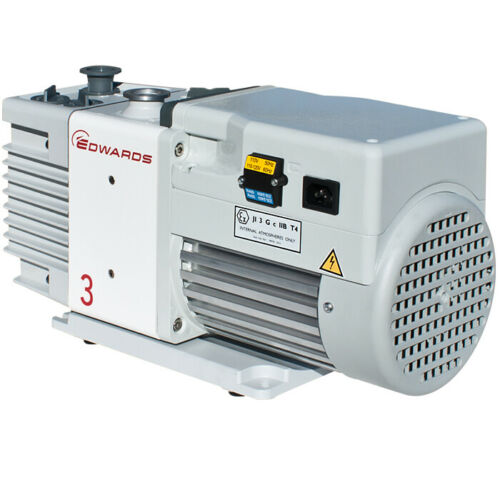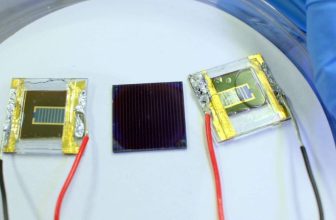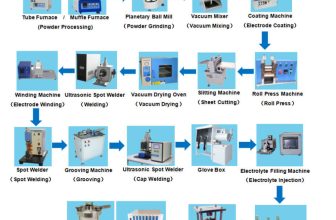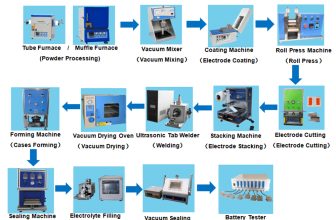
Button Cell / Coin Cell Batteries
Button and coin cell batteries are used to power small, portable electronics devices like the keyless entry remote for your car, laser pointers, pocket calculators, implantable cardiac defibrillators and even artificial cardiac pacemakers.
Most button cell and coin cell batteries have a low self-discharge, which means they hold their charge for a long time, giving them a long shelf-life. Because they’re so consistent and reliable, these types of batteries are great for use in products that require long, continuous service. They keep us on time when used in wristwatches, and in the case of pacemakers, we trust them with our lives, with a single battery providing five to ten years of artificial heartbeat.
Coin and button cells derive their names from their shape and size – thinner variants are called coin cells because they resemble coins, while thicker ones are called button cells because, you guessed it – they look like buttons. Their size ranges from 5 to 25 millimeters in diameter and 1 to 6 millimeters in height, and they’re single cell, usually primary cell batteries, which means they are single-use and disposable. Secondary cell batteries are rechargeable, though seldom seen when it comes to coin/button cells. Most commonly, secondary button and coin cells are used in computers and handheld gaming devices to store data when the device is powered off.
There are three main types of battery chemistries used in button/coin cells: alkaline, lithium and silver oxide. While they’re physically interchangeable, certain battery chemistries are preferable depending on usage specifications. For example, high drain applications like speakers and cameras will have different energy needs than a wireless remote control. The more you know about coin and button cell specs, the better you’ll be able to maximize battery life and efficacy. We’ll take a look at some of the major characteristics of alkaline, lithium and silver oxide batteries below.
Alkaline Button/Coin Cell Batteries (1.5 Volts)
When compared to lithium and silver oxide, alkaline batteries, which are denoted by the IEC prefix “LR”, provide the least capacity and stable voltage. Alkaline voltage drops gradually with use, rather than lithium and silver oxide batteries, which provide steady, stable voltage before experiencing a sharp drop-off at the ends of their lives.
Since alkalines average around half the life of lithium and silver oxide, they are cheaper, meaning they are most likely to be included with any electronics you purchase, like kids’ toys or watches. However, if you are looking to replace the batteries in such a device, it’s going to be worth your while to invest in a lithium or silver oxide battery. These may be a little more expensive, but the return on investment you’ll get will easily pay for itself. And in the case of time telling devices, or metering equipment such as the light meter on a camera, stable voltage is always preferred in order to ensure accuracy.
Silver oxide batteries, which are denoted by the IEC prefix “SR”, are also a greener alternative to alkaline, as they are recyclable.
Note: For clarification, battery voltage and mAh refer to separate energy characteristics.
mAh (milli-ampere hour) measures battery capacity. In other words – how much current a battery will discharge over a one hour period. Higher mAh ratings correspond to how long a current can be drawn, rather than how fast it can be drawn. The mAh abbreviation is also written as Ah or Ampere-hour. (1 Ah = 1,000 mAh). Overall capacity is influenced by factors like temperature and speed of discharge. A 40 mAh battery can discharge 40 milliamps for one hour, 20 milliamps for two hours, and so on.
Voltage is a measurement of electrical potential, with all batteries being rated in volts DC (direct current). Voltage is determined by electrochemical reactions that occur in the battery, which vary according to battery type.
Silver Oxide (1.5 Volts) vs. Lithium (3 Volts) Button/Coin Cell Batteries
The choice between lithium and Silver Oxide
batteries is a matter of voltage. Lithium batteries have a nominal 3 volt output, and silver oxide batteries operate at 1.5 volts. So, you’ll want to find out what type of voltage is required for the device you’re using. The easiest way to do so is by looking at the battery being replaced, which should have all the info you need. Battery requirements can also be found in product manuals, and often on the product itself.
All coin cell lithium batteries consist of lithium manganese dioxide chemistries (Li-MnO2), which account for 80% of the lithium battery market. Li-MnO2 chemistry is denoted by the IEC prefix “CR”, which we’ll discuss more below. Because it operates at 3 volts, one Li-MnO2 can replace two alkaline or silver-oxide cells, which function at 1.5 volts. It’s worth noting that voltage can be subject to fluctuate slightly depending on the quality of the battery maker. So, the more reputable the company, the more likely the battery will be of maximal quality.
Aside from superior capacity compared to alkaline batteries, lithium and silver oxide batteries have better leakage resistance, meaning they are less subject to corrosion, which can damage and destroy your device. They are also more lightweight and heat/cold resistant, functioning better in temperature extremes.
There are a couple other aspects of silver oxide batteries worth noting. Replacing a mercury button cell, which may be found in older photography equipment, with a silver oxide battery will affect the light meter settings, requiring them to be recalibrated. Mercury batteries, which are no longer produced, operated at 1.35 volts, compared to silver oxide’s 1.5 volt discharge. Also, silver oxide watch batteries may have an “SW” or “W” suffix, which some makers use to denote whether the battery is a low drain (SW) or high drain (W) device. However, the IEC simply denotes that a watch battery is compliant with its standards with a “W” suffix, which can be confusing.
You can make a reasonable determination of whether a watch or other device is high or low drain type by its features and functionality. If it’s backlit, records the temperature and has a calculator, it’s probably high drain. If you’re not sure, the best way to be certain is to contact the manufacturer for the battery’s specifications. When in doubt, go with high drain – they will last longer in both types of devices.
Battery Naming Standards
The way batteries are named can make it confusing to find what you need. Thankfully, once you know the format, the process becomes much easier.
Every battery has a standardized name. There are multiple sets of battery naming standards, but currently the most prevalent is IEC (International Electrotechnical Commission), though others such as ANSI (American National Standards Institute) may be seen.
In an ideal world, button/coin cell batteries will have their IEC classification prominently displayed.
Take a look at the battery on the right. As you can see, it’s a CR2032, which tells you that it is a single cell, round lithium battery with a diameter of 20 mm and a height of 3.2 mm. How did we get all that from a few letters and numbers? Let’s break it down.
The first letter, C, denotes the battery chemistry, in this case Lithium. The next letter, R, tells us the battery shape: round. Battery shapes can also be Flat (F), Square (S), and simply Not Round (P).
Finally, the three or four digit reference numbers on the batteries indicate their exact or approximate size as needed. In this case, 2032 tells us that the battery is 20mm in diameter and 3.2mm thick.
Other modifiers can be used to denote whether a battery consists of multiple cells (a numerical prefix corresponding to cell amount), whether it’s a high or low drain device and more. In silver oxide batteries, the SW suffix corresponds to use in a low drain device, while W refers to use in high drain devices.[3]
Refer to the chart below for a full list of Button/Coin cell battery types and nomenclature.
Brand Specific Naming
Here’s where battery types and names can really get confusing. Companies often provide specific battery names other than the industry standard in order to encourage people to buy the same brand. Consumers are led to believe that there’s something unique to a certain battery. While certain brands may vary in quality, most are actually interchangeable with any other company’s model.
If you search a battery on our site, you can find other compatible models listed in the “Replacement For” section, making it easy to compare prices and features. If you’re still unsure after consulting our buyer’s guides, contact our customer service and we’ll get you on the right track.
Safety and Precautions
Important: Button and coin cells are harmful if swallowed, and are at a higher risk of being accidentally ingested by children due to their candy-like size and shape. Be sure to store, recycle and dispose of your batteries in a safe, room temperature area out of the reach of youngsters and pets.[4]
Handle old, corroded batteries with care. Battery acid is sulfuric acid, and prolonged contact with the skin can cause irritation, pain and even burns. Though they are no longer produced for environmental reasons, mercury batteries were once a popular energy source, and while it’s unlikely you would come across one today, it’s worth noting that extra care should be taken when disposing of them.
| Chemistry Type | Code | Positive Electrode | Negative Electrode | Electrolyte | Nominal Voltage | End-Point Voltage |
| Alkaline | L | Manganese dioxide | Zinc | Alkali | 1.5 | 1 |
| Silver | S | Silver oxide | Zinc | Alkali | 1.55 | 1.2 |
| Zinc-air | P | Oxygen | Zinc | Alkali | 1.4 | 1.2 |
| Lithium | C | Manganese dioxide | Lithium | Organic | 3 | 2 |
| Lithium | B | Carbon mono fluoride | Lithium | Organic | 3 | 2 |
| Lithium | G | Copper oxide | Lithium | Organic | 1.5 | 1.2 |
| Mercury | M or N | Mercuric oxide | Zinc | Alkaline | 1.35/1.40 | 1.1 |
L = Alkaline
LR = Alkaline
AG = Alkaline
SR = Silver Oxide
SG = Silver Oxide
BR or CR = Lithium
For silver oxide and lithium batteries, the end-voltage is the value at the last usable point, after which the voltage drops very rapidly. For alkalines, which lose voltage slowly, the end-point is the voltage beyond which it is deemed that devices will not work correctly, approximately 1.0 volt.
The ability to store energy in so many different capacities allows us to do things no other creature can. Though small in stature, coin and button cell batteries have played a monumental role in ushering society into its current, hyper-connected state. These batteries are kings of convenience, saving us countless hours of time and work, and allowing us to focus on the best parts of life. Buttons cells hold together the fabric of the modern world, and for all their value, coin cells might as well be the currency.
- https://en.wikipedia.org/wiki/List_of_battery_sizes#Button_cells_-_coin.2C_watch. Retrieved 20 October 2016.
- http://www.consumerreports.org/cro/batteries/buying-guide.htm. Retrieved 17 October 2016.
- https://en.wikipedia.org/wiki/Battery_nomenclature#History_of_the_IEC_standard. Retrieved 19 October 2016.
- http://www.energizer.com/about-batteries/battery-care. Retrieved 17 October 2016.






